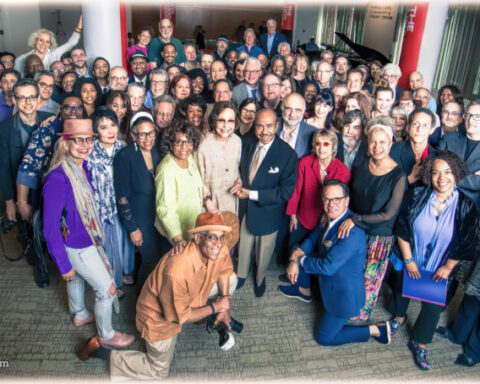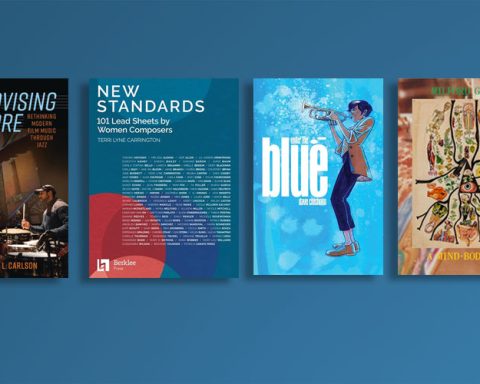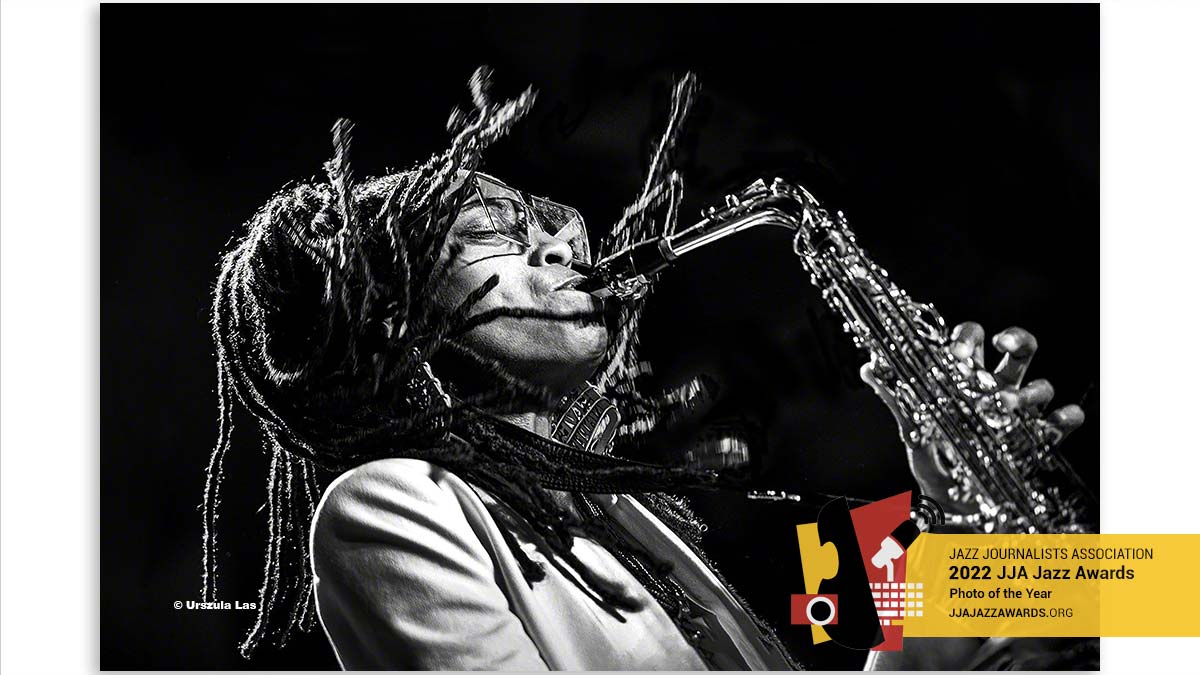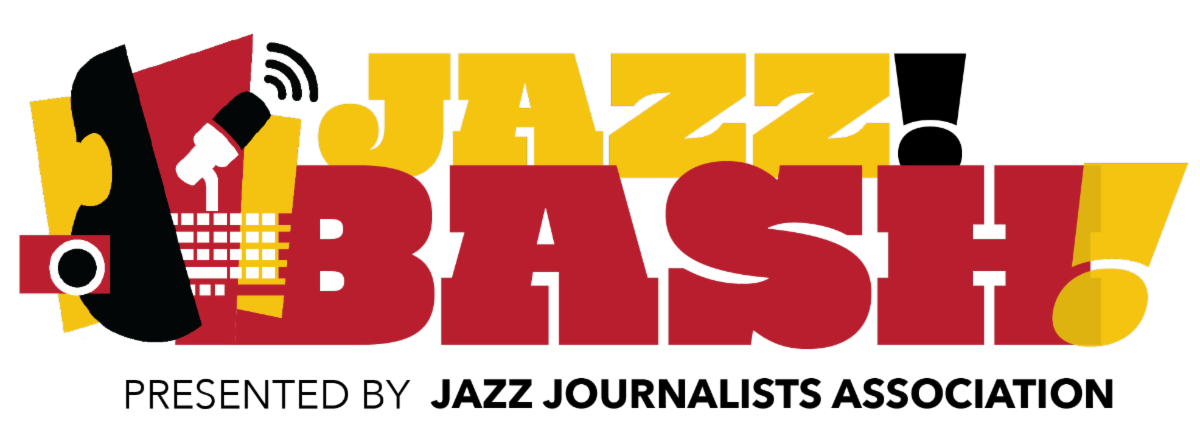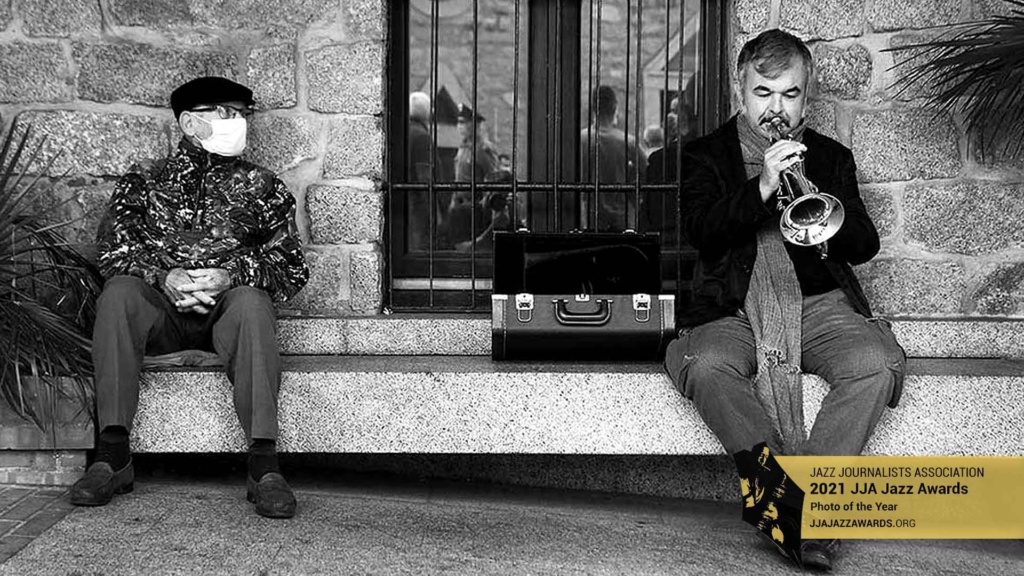The JJA’s eyeJAZZ Training program held its first online webinar on March 17, welcoming 33 “official” trainees and countless more participants to a series of interactive sessions about video shooting, editing, distribution and journalistic issues related to the production of brief, news, lo-tech but strong concept videos for public consumption.
The two-hour webinar, in which instructors Bret Primack, Floyd Webb, JoAnn Kawell and Howard Mandel offered guidance on camera basics and a first eyeJAZZ assignment (to film the outside of a jazz venue), can be viewed by everyone: the recorded webinars as well as other training resources and now available to the public on the eyeJAZZ Training website. You can subscribe to the webinar page to be notified by email or RSS when new webinars are posted.
Though 33 applicants were selected out of 180 applicants from around the United States and other countries including Canada, the UK, Japan, South Africa, Cyprus and India to receive a Kodak Zi8 pocket video camera and take part in the core training program (as per the budget for the JJA’s original grant application to MidAtlantic Arts Foundation’s Jazz.NEXT funding project), the training program has been expanded to include all applicants who want the training. Currently some 60 people have signed up to view the live webinars, submit training assignments for critique by eyeJAZZ instructors, and participate in an online training forum.
As initially intended, the webinars are archived and accessible so that lessons will not be lost, but indeed be available for nascent jazz videographers and new media activists. The JJA has also organized a loose coalition of “eyeJAZZ community partners” to advise on introduction and employment of eyeJAZZ videos in their local areas.
JJA members are especially invited to partake of eyeJAZZ training in the use of light, inexpensive, flexible and common HD pocket video cameras as a means to turn the spotlight on jazz-related activities and news-stories, take notes and employ during interviews for eventual posting on YouTube and personal blogs. If you didn’t have the opportunity to apply but would like to learn to make eyeJAZZ videos, please make use of the webinar recordings and other materials on the training website.
eyeJAZZ trainees and others have already begun to make eyeJAZZ videos; outstanding examples will be posted at eyeJAZZ.tv and at the eyeJAZZ Facebook page. Webb’s visit to Chicago’s Jazz Showcase, Primack’s views of jazz in Taiwan and Mandel’s glimpse of the club Local 269 in downtown Manhattan are up, as well as video by E.A. Stansbury (Washington, D.C.), Mark Niemann-Ross (Portland, OR), Lena Adasheva (NYC), and the Jazz Evangelist (Atlanta).
The eyeJAZZ project aims to make jazz more visible to more people through a new jazz video news form — short, easily produced and quickly distributed ‘eyeJAZZ videos’ that show jazz being played and enjoyed everywhere,” says JoAnn Kawell, veteran print and radio editor/producer and social media specialist, the eyeJAZZ instructor who is also responsible for administration of the JJA’s websites and online platforms. All instructors have voiced hopes that the eyeJAZZ concept will take hold, resulting in waves of the new jazz video news form being created long after the JJA’s six-month grant period has ended. “There should be a thousand ‘jazz video guys,'” says Primack, known professionally by that moniker.
More details about eyeJAZZ videos are posted on the project website. If you are already creating videos that fit the eyeJAZZ criteria, post them on eyeJAZZ facebook page. And if you know someone else who would like to “eyeJAZZ” too, please direct them to the program.

